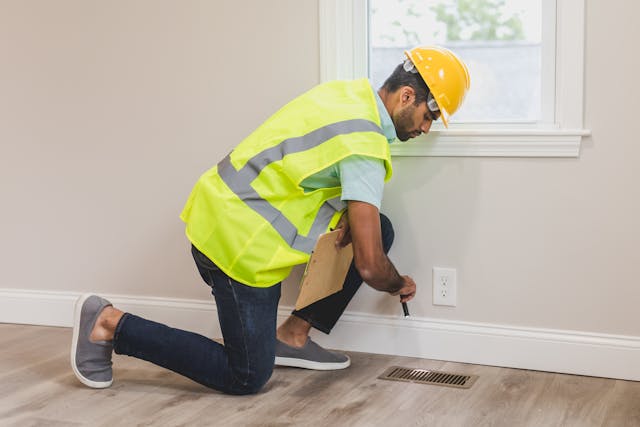As you walk through your home, do you ever pause and wonder about the hidden dangers lurking in the walls? One such danger is asbestos. This once-popular building material could be silently residing in your space, especially if your home was built before the 1980s. While it’s crucial to keep our living environments safe and healthy, knowing how to identify potential asbestos is vital. Once you suspect your home poses asbestos risks, leave the job to a professional asbestos inspection Sydney. Why? You’ll be dealing with hazardous elements.
But how do really people spot asbestos before it’s leaking, spreading everywhere, and risking your family? Read on and get some insight into telltale signs that might indicate its presence. Your safety starts with awareness.
Check the Age of the Building
The age of your building plays a significant role in determining the likelihood of asbestos presence. Homes constructed before 1980 are commonly at risk, as asbestos was widely used for insulation, roofing, and flooring materials during that time. If you’re unsure about when your home was built, check property records or ask previous owners. Knowing the timeline can guide your next steps regarding safety assessments. Older buildings often contain materials like popcorn ceilings or textured wall finishes that may harbor asbestos fibers. Even if renovations have occurred over the years, original materials might still be hidden beneath layers of updates.
Inspect Textured Ceilings and Walls
Textured ceilings and walls can add character to a home but may also hide potential hazards. Many textured finishes were popular decades ago, often containing asbestos fibers. If your house was built before the 1980s, it’s crucial to take a closer look. Pay attention to popcorn ceilings or any spray-on textures. These materials might seem harmless at first glance, but appearances can be deceptive. Use caution when inspecting these surfaces. Avoid disturbing them; releasing asbestos fibers into the air can pose serious health risks. Instead, consider taking photographs for reference if you spot anything suspicious.

Examine Old Flooring
Old flooring can be a hidden danger when it comes to asbestos. If your home has floors installed before the 1980s, it’s worth taking a closer look. Vinyl tiles and linoleum are common culprits. These materials often contained asbestos fibers for added strength and durability. The glue used to adhere them could also pose risks. Moreover, look for signs of damage or wear. Cracks or peeling can release harmful particles into the air. Even if they seem intact, consider their age—if they’re decades old, it’s better to err on the side of caution.
Look at Insulation
If your home was built before the 1980s, it’s worth taking a closer look at what lies behind those walls. Insulation made from vermiculite or certain types of batt insulation can contain asbestos fibers, which become hazardous when disturbed. Look for any signs of wear and tear on exposed areas like attics or basements. If the insulation looks crumbly or damaged, avoid touching it directly.
Test With a Professional
When it comes to asbestos, taking matters into your own hands can be risky. If you suspect your home may contain this hazardous material, hiring a professional for testing is crucial. Trained experts have the right tools and knowledge to identify asbestos safely. They will conduct thorough inspections and take samples if necessary. These professionals follow strict safety protocols to ensure their and your protection. Their expertise allows them to differentiate accurately between materials that contain asbestos and those that do not. Once the analysis is complete, they provide detailed reports outlining any concerns found in your home. This information can help guide next steps, whether it involves remediation or further monitoring of the situation.
Don’t gamble with your health or peace of mind when dealing with potential hazards like asbestos. A professional assessment ensures you are well-informed about what’s lurking in your walls or ceilings, allowing you to make educated decisions about how best to protect yourself and your family moving forward.
…